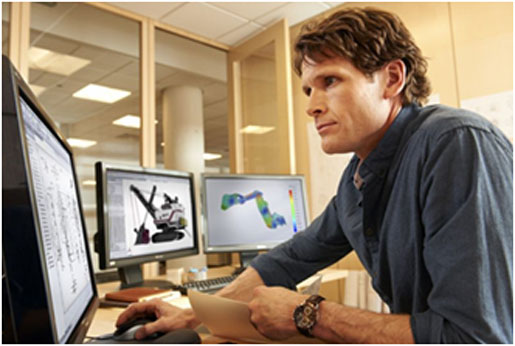Medical device makers should closely evaluate system features and the vendor’s community reach when choosing a 3-D CAD package.
December 3, 2015

Medical device makers should closely evaluate system features and the vendor’s community reach when choosing a 3-D CAD package.
John Cioffi
Choosing a 3-D CAD package today is significantly different than it was 10 years ago. If you were to take to your search engine of choice and search for CAD software you’d get dozens of options, some immensely dissimilar from others . . . but not necessarily on the surface. While medical devices vary greatly in complexity and application, without question a mature, capable, and scalable 3-D CAD system should be used to design these products for manufacturing.
CAD is ever-evolving. A majority of the CAD systems in use today are 3-D. When evaluating CAD software in the medical device field, find out how efficiently each package creates the types of products your company makes. This may seem like an obvious point but, for the purposes of helping inform your research and evaluation, no two CAD products are created equal. While most 3-D CAD systems will give you a nice visualization of your CAD model, the path and ease to getting to that finished model varies greatly per system.
Go Beyond the Basics
Most CAD tools can cover the basics of design on a variety of platforms. Capable and efficient 3-D design is obviously important, but what are your customers and suppliers using? Typically that’s a starting point for medical device companies—ensuring compliance with their customers’ and suppliers’ CAD tool. This will reduce file conversion issues and a lot of unnecessary, time-consuming back-and-forth. A recommendation is to understand how CAD systems work with file types of different CAD systems. This will help you narrow down your options faster. It is not unusual for medical device companies to be standardized on two different systems.
Paramount to any successful evaluation is analyzing the feature-set within each system: are there different versions of the offering? What’s included out-of-the-box versus in the form of add-ons? How reliable and stable is this system compared to others? For instance, if the medical devices you’re designing involve large complex assemblies than that should be a consistent question when evaluating various vendors, “how does product x handle large complex assemblies?” This is critical as some CAD packages deal with large assemblies more efficiently than others.
Community, Ecosystem & Evaluating for Growth
Besides features and compliance, another thing to consider is the vibrancy of a particular vendor’s community. Your investment doesn’t end even after the system. Get an understanding of how this vendor is set up. How strong is their partner network? Do they have one?
Odds are you will have ongoing support, training, and licensing needs, so understanding the support system that is in place after purchase is just as essential as the software itself. Are there user groups in your area? Are there webinars or seminars that can be attended frequently to help stay up-to-date and ahead of the curve? Some 3-D CAD vendors and their partner networks specifically dedicate blogs and content to professional development and give customers access to these resources at no cost. With social media more relevant than ever, check out each vendor’s YouTube channel.
At a medical device company that builds life-saving products, an engineering team will continue to grow as the business does. A large and qualified talent pool should be on a medical device companies’ radar when considering a 3-D CAD system—get a good grasp of a vendor’s presence in the educational community. Tailor this research in talent specific to your region—understand what systems are taught at the colleges and universities local to you. Future grads at these schools with engineering degrees will be on your radar and vice versa once they graduate, so make sure the system you’re evaluating complements the pool of talent that will be entering the workforce each year as you continue to grow.
Room to Grow
Over time you will want more from your CAD solution. Evaluating for growth will help medical device companies achieve future success within one CAD system without having to add disparate tools down the road. Be conscious of a specific vendor’s software ecosystem and add-on products, and be attentive to these things early on in your evaluations and internal discussions. You may need some of these additional tools right away, and if not, you will benefit from them in the future.
Two common examples are plug-ins for virtual testing and data management—formulate questions around these topics and ask for examples. Most 3-D CAD vendors have various tools within their product suite but be sure to understand what those tools are and how they’re integrated into the CAD tool itself. You may run into tools that appear capable on the surface but in reality present a steep learning curve and daunting implementation.
Remember, an Internet search for 3-D CAD software will yield innumerable results. Start with what your customers and suppliers are using but approach this process with an open mind; there are CAD systems that can work efficiently with files from other CAD systems. Keep in mind the community and available talent pool that different vendors bring to the table and how that will play out in terms of professional development for your existing team and the ease of attracting future talent. And don’t forget, extra considerations are essential in the medical device field specific to a vendors’ software ecosystem—not just to help solve your immediate needs, but to anticipate your future needs as well.
Check out the future of medical technology at the world's largest medical design and manufacturing event—register for the MD&M West Conference, February 9-11, 2016. |
John Cioffi is a partner at DesignPoint Solutions, a provider of sales, support, and training for SolidWorks 3D design products and 3D Systems rapid prototyping/3D printers based in Clark, NJ. Reach him at [email protected].
[Image courtesy of DESIGNPOINT SOLUTIONS]
You May Also Like


